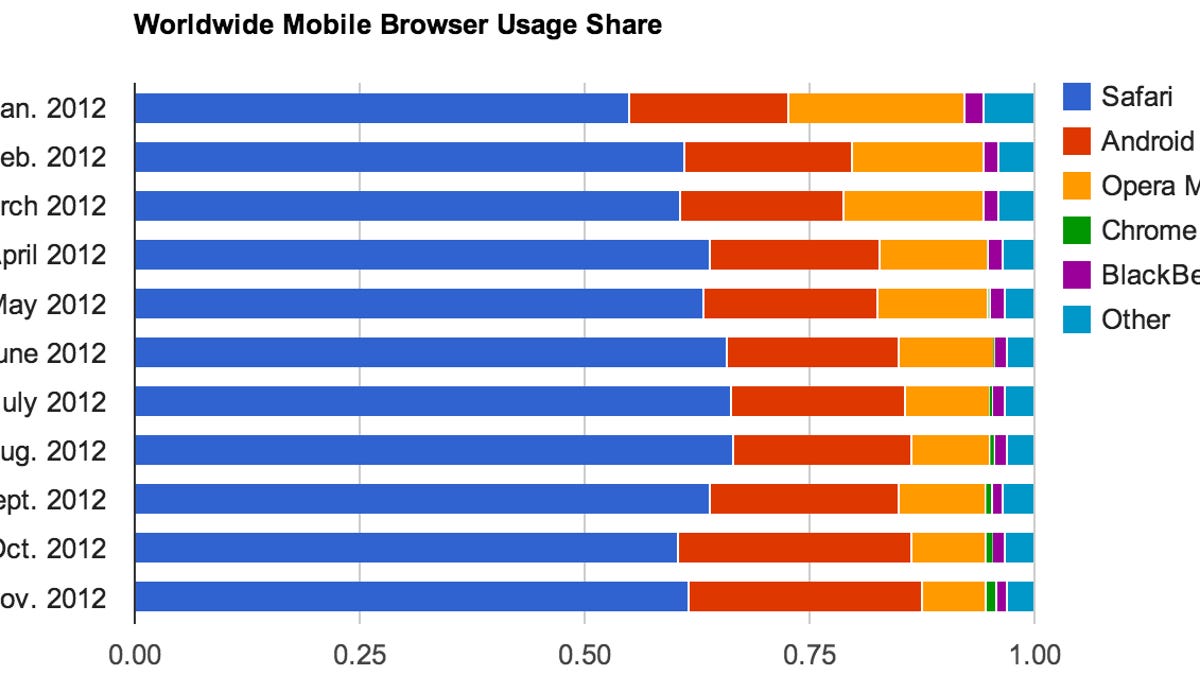Chrome gains a mobile foothold -- on Android only
Google's browser surpassed 1 percent of Web usage in November for smartphones and tablets, Net Applications' data shows, but it's almost a no-show on iOS so far.
Chrome has made a dent in the mobile browser market -- but only on Android so far.
Although Google released Chrome for iOS in June, the browser accounted for only 0.01 percent of browser usage on iOS in November, Net Applications' latest statistics show. On Android, it was 4.03 percent for the month, and in the mobile market overall, it reached 1.14 percent of usage.
Chrome is available only for Android devices running version 4.0 or later of the mobile operating system, which means most people can't use it even if they want to. On iOS, Chrome uses Apple's version of the WebKit rendering engine, as required by Apple rules, but wraps it with Google's user interface and other extras. Chrome is "exceptionally profitable" for Google because it drives search traffic and because Google doesn't have to share resulting ad revenue with other browser makers.
In that mobile market, Apple's Safari continues to dominate with 61.5 percent of usage among people who visited the Web site that use Net Applications' analytics software. Android's unbranded browser has been rising through the second-place ranks, up to 26.1 percent of usage in November from 16.4 percent a year earlier.
Google's mobile-browser growth has come at the expense of the former No. 2, Opera Mini, which has plunged from 20.1 percent a year ago to 7.0 percent in November 2012. Opera Mini is popular on older-generation phones, but the Norwegian company is struggling to transfer that usage to modern smartphones. It's still ahead of Firefox, which doesn't even show in Net Applications' statistics, though Mozilla has begun pushing hard for influence in the mobile market.
Mobile browsing -- that done with smartphones and tablets -- now accounts for 10.4 percent of all browser usage. On personal computers, which was responsible for 89.3 percent of browser usage in November, the market is much more stable.
Here, Internet Explorer maintained its lead with 54.8 percent of usage. Second-place Firefox reclaimed a bit of lost ground lost in October to reach 20.4 percent in November. Chrome dropped to 17.2 percent; Safari and Opera were mostly level at 5.3 percent and 1.7 percent, respectively.


